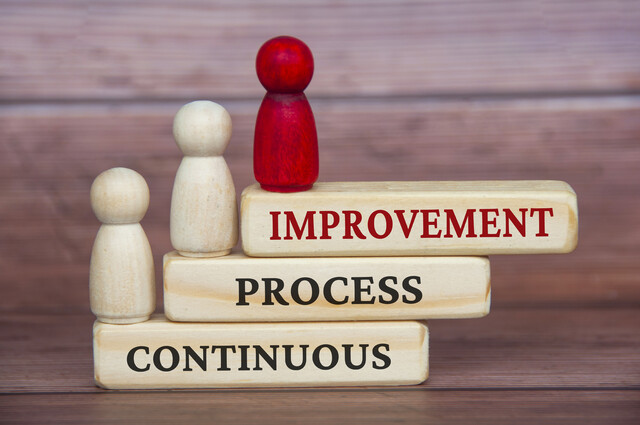Sexual harassment already has been covered to an extent, but this is a serious issue that organizations face around the world. This is one of the most common and all-too-often occurring forms of discrimination in the workplace.
What is Sexual Harassment?
| Sexual harassment is defined as any unwelcome advance or conduct related to gender. Sexual harassment creates an environment of tension, hostility, intimidation, and offense that no woman or man should ever have to endure. Simply put, sexual harassment is repeated, not asked for, and not returned.
There are varying types and degrees of sexual harassment. These include: � offensive innuendo; � lewd and belittling comments; � leers; � blocked pathways; � sex as a job requirement (quid pro quo sexual harassment); � unwelcome touching; � extreme physical aggression; � rape. |
� decreased productivity;
� low morale;
� absenteeism;
� employee turnover.
Employee turnover can be so substantial that it costs companies nearly $6.5 million per year. Organizations also are required to pay court costs, jury awards, and Equal Employment Opportunity Commission (EEOC) procedural costs. This can average around $500,000 to several million dollars.
Identifying, Avoiding, and Reporting Sexual Harassment
Sexual harassment can show itself in any of the following scenarios:
� A person telling a sexual joke to another person, who does not appreciate the joke. This is an issue of a person not respecting the other person's attitude toward sex or sexual jokes.
� A person telling a sexual joke to another person and both find it funny, but a third person overhears it and is offended.
� A person making a sexual advance toward her or his coworker.
� An employee of an organization making a sexual advance toward a customer.
� A customer making sexual advances toward an employee.
� A manager or person of power in an organization requiring sex or sexual favors for employment or promotion.
Not only do these examples show the offenses of sexual harassment, but it is important to realize that sexual harassment does not have to be a male-female situation: It transcends across both genders and sexual orientations.
One area where sexual harassment cases can appear is when two people are in a mutual relationship. There is no law that says two employees of an organization cannot be in a relationship, but some organizations may not allow relationships within the same store. As long as the relationship is respectful in the workplace and other employees do not feel disrespected by it, then these relationships typically can exist without issue. However, issues may arise if one person in the relationship were to be promoted, causing a subordinate-supervisor relationship. Should the relationship break down, there is always the scenario that the subordinate may file a sexual harassment case against the supervisor out of retaliation. If the relationship were to continue successfully, other issues may arise with favoritism and other employees believing that the person in the relationship is not being required to do a fair share of the workload. Either way, there are situations that could easily turn into sexual harassment lawsuits.
A good sexual harassment policy should include the following components:
� Thorough description of what sexual harassment is and is not in your workplace.
� A statement that outlines your company's support of a workplace that is free, equal, and non-offensive.
� An outline of who is covered under the policy, including all managers, customers, vendors, and job applicants.
� An outline of whom to report sexual harassment to, including the appropriate authority and names.
� An outline of how sexual harassment is being addressed in the workplace, such as training courses, videos, signs, etc.
� An outline of the potential consequences of a sexual harassment claim, including what happens if the event was a misunderstanding or if the person is found guilty.
� An appendix that outlines where an employee can go to locate the company's other anti-discrimination policies.
Understanding Management Issues and Turnover
� Disruptions and low morale: Conflicts within a group can cause fights, hatred, distrust, and low morale. When morale does not stay high, production suffers.
� Miscommunication, misunderstanding, prejudice, fear, inefficiency, and disunity: Employees must find the work environment one where they feel good about coming to work. When bad communication, discrimination, and fear are found in the workplace, then a whole organization can be destroyed.
� Limited creativity and innovation: Diversity should enhance creativity and innovation. Too often, managers fail to make good use of diversity of skills and perspectives, causing a poor work environment that does not promote the use of different skills available through various members of the team.
� Inability to compete in recruiting for the best new employees: Any organization that gets a reputation for having a high turnover finds that it is difficult to recruit people with diverse backgrounds. This also can cause low morale stemming from diversity issues.
� Weakened customer base: As an organization's reputation for lack of diversity grows because it fails to hire people with diverse backgrounds, then the organization will limit its customer base.
� High employee turnover: Employees leave non-supportive organizations to find a better work environment. Organizations waste millions of dollars on attracting the top employment candidates.
� Recruitment: We already know that an organization lacking in diversity can have a difficult time recruiting qualified individuals. Recruitment is also a method through which organizations are able to obtain a diverse workplace.
� Retention: Retaining employees is all about team dynamics. It is about interacting with others and getting into the game of teamwork. This means that as a manager or team leader, it is important that you recognize the talents and passions that exist around you. You must also work cooperatively with teammates to execute the goals of your organization.
� Results: By ensuring diverse recruitment and team member retention, you will find the results are significant and apparent. The results ensure that the organization is able to be innovative and creative.
The three Rs of diversity lead to job satisfaction and retention, and the benefits compound themselves. A corporate environment such as this generates a great deal of momentum. Relatively quickly, the company will realize that recruitment becomes easier and produces a higher level of job applicants. A diversity program will come full circle when the three Rs are utilized effectively.
� Ensure that all new hires blend with the culture of your organization. Assess the candidate's personality and leadership characteristics to make sure they match the company's culture.
� Provide employees with referral bonuses for successful new hires. After a new hire has been in the workplace for a specific amount of time, perhaps 30 to 60 days, give the referrer a bonus.
� Train managers in leadership and diversity. This ensures that managers are aware of diversity issues in the workplace and lead their teams appropriately.
- Develop an internship to recruit college graduates. This program not only allows you to hire a diverse workforce but also allows the individual to become comfortable in the workplace before signing on as a permanent member. It gives that person a taste of your organization and encourages her or him to continue there if you and the graduate believe the relationship has been positive.






























